Breast cancer happens when cells in the breast grow and divide in an uncontrolled way. Breast cancer mainly occurs in women but can also be found in men.

What is breast cancer?
Breast cancer is a type of cancer that affects one or both breasts. It occurs when cells in the breast begin to divide and grow out of control, causing a lump or tumor. However, these cells can grow for some time before signs appear. Breast cancer can affect both men and women.
Breast cancer death rates have decreased steadily over the years due to early detection and ongoing advances in treatment.* Regular mammograms for breast cancer prevention can help detect the disease before a lump is felt.
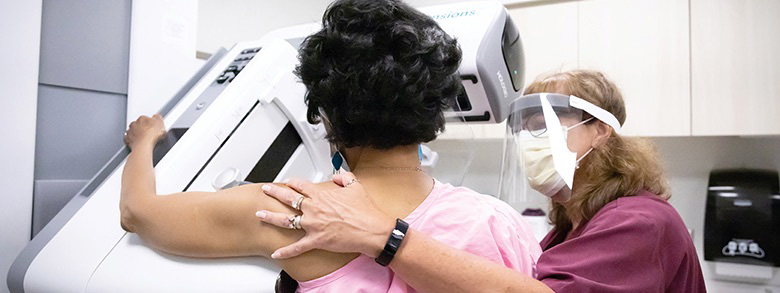
Breast Cancer Center of Excellence
At the AHN Cancer Institute's Breast Cancer Center of Excellence, we understand how difficult a breast cancer diagnosis can be for you and your loved ones. We provide patients with information about their diagnosis and innovative, comprehensive breast cancer treatment options. You'll also have access to our open and upcoming breast cancer clinical trials.
Some of the cutting-edge techniques our specialists use to help treat breast cancer include:
- Nipple-sparing mastectomy: This procedure removes all of your breast tissue but keeps your nipple and areola in place.
- GammaPod® stereotactic radiation treatment: This treatment uses a device to target radiation beams with pinpoint accuracy.
- Minimally invasive robotic DIEP flap surgery: This robot-assisted procedure uses skin and tissue from your lower abdomen to reconstruct your breast.
- Post-mastectomy Resensation®: This procedure restores sensation to your breast after a mastectomy.
- Lymphovenous bypass: This procedure creates a path for fluid from your arm to drain to reduce the risk of arm lymphedema.
- Reirradiation for locoregional recurrent cancer: Some patients with local, in-breast cancer recurrences after lumpectomy may be candidates for radiation a second time using targeted external beam radiation therapy.
Our breast cancer specialists work together as a team to create customized plans that meet your needs. Depending on your diagnosis, your team may consist of:
- Breast surgeons.
- Medical oncologists.
- Radiation oncologists.
- Plastic and reconstructive surgeons.
- Genetic counselors.
- Pathologists.
- Radiologists with expertise in breast imaging.
- Nurse navigators.
- Physical therapists.
- Occupational therapists.
- Integrative medicine experts.
- Mental health professionals.


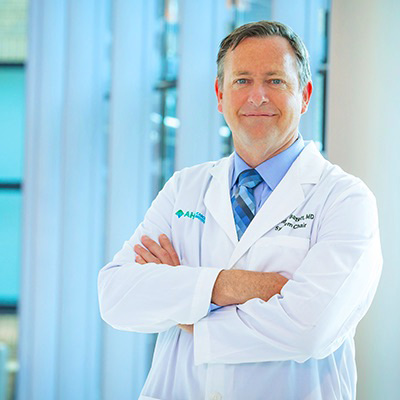

Breast cancer symptoms and signs
Early detection is critical to successful breast cancer treatment. Mammograms can help detect breast cancer before a lump is present. We recommend annual mammograms if you're age 40 or older and at average risk. Breast cancer screening may need to begin earlier than age 40 if you have a family history of breast cancer or other risk factors. Please discuss when you should begin screening with your doctor.
Possible breast cancer signs
Common breast cancer symptoms include:
- Appearance of a lump in one or both breasts or your underarms (armpit).
- Swelling or inflammation in your breast.
- Pain in all or part of your breast.
- Discharge from your nipple (including blood).
- Irritated breast skin.
- Sudden change in the shape of your breast.
- Redness in your nipple area or breast.
- Inverted nipples (nipple lays flat or turned inward).
- Puckering or dimpling of breast skin.
If you notice any signs of breast cancer or changes in your breasts, please get in touch with your doctor to schedule a diagnostic mammogram.
Breast cancer risk factors
Several risk factors can increase your risk of breast cancer. While some are genetic and can’t be changed, others are lifestyle choices that can be adjusted to reduce our risk.
Some of the breast cancer risk factors you can’t change include:
- Being over the age of 50.
- Receiving therapeutic radiation therapy to your chest area before age 30.
- Having a family history of breast or ovarian cancer.
- Having specific gene mutations (such as BRCA1 and BRCA2).
- Having a personal history of breast cancer.
- Past exposure to diethylstilbestrol (DES) — a drug given to pregnant women between 1940—1971 to prevent miscarriages.
Lifestyle choices that can put you at higher risk of breast cancer include:
- Drinking alcohol excessively.
- Living a sedentary lifestyle with little to no exercise.
- Taking hormones — such as hormone replacement therapy — during menopause.
- Being overweight or obese after menopause.
- Smoking.
- Your reproductive history — such as not having children, having your first pregnancy after age 30, and not breastfeeding.
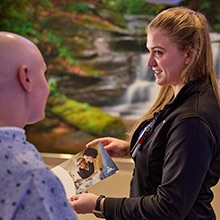
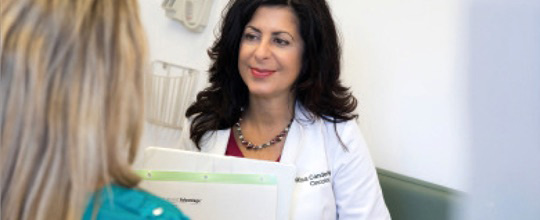
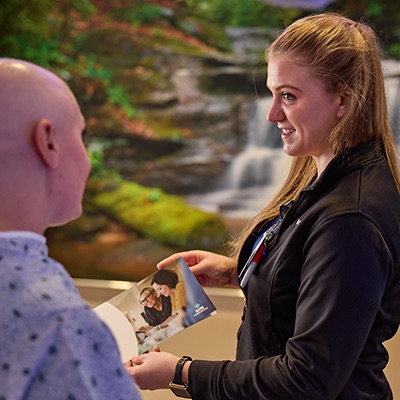

Breast cancer diagnosis
A precise breast cancer diagnosis is critical to creating a personalized treatment plan that meets your needs. Your oncology team includes nurse navigators who assist you with details so you can focus on getting well. They help coordinate your appointments, tests, and treatments, provide access to financial counseling, and connect you with other support services. This reassurance and guidance continues from the time you’re diagnosed throughout your entire care journey.
At your first appointment, we'll talk with you about your breast cancer symptoms, review test results, and perform a physical breast exam. You may need other tests so we can determine the location and stage of breast cancer. The breast cancer stage refers to how advanced the cancer is and if it has spread (metastasized). Breast cancer tests include:
- Digital mammogram or full-field digital mammography: A digital X-ray of your breast. This test allows technicians to zoom in on select areas for closer examination. Find AHN locations that offer mammograms.
- Tomosynthesis: A 3D X-ray reconstruction of your breast. It can detect cancer at its earliest, most curable stage.
- Ultrasound: This sends high-frequency sound waves through your breast to create images for your doctor to review.
- Magnetic resonance imaging (MRI): Powerful magnets and radio waves create detailed images of your breast.
- Image-guided breast biopsy: Biopsies can help confirm a breast cancer diagnosis. We use minimally invasive techniques to remove a sample of breast tissue to examine it with a microscope:
- Core biopsy: We numb your your breast with local anesthesia and use a hollow needle to remove breast tissue for examination.
- Mammotome® breast biopsy system (vacuum-assisted biopsy): This device gently vacuums, cuts, and removes a breast tissue sample through a small quarter-inch incision.
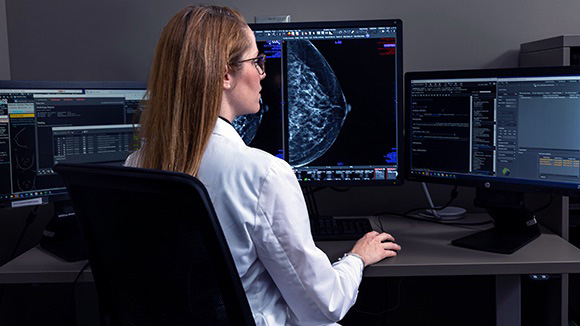
Breast cancer stages
If a physical exam or mammogram is suspicious for breast cancer, you’ll need additional tests and a biopsy to determine your diagnosis. If a breast cancer diagnosis is confirmed, our breast cancer specialists will begin a process called staging to figure out where the cancer is located and if it has spread. The breast cancer stage will help determine how to customize your treatment to meet your needs.
There are five breast cancer stages:
- Stage 0: The cancer is located only in your breast ducts and hasn’t spread to surrounding tissue, lymph nodes, or other areas. Stage 0 is considered noninvasive and is typically detected through imaging.
- Stage I: This is the earliest stage of invasive breast cancer (cancer that has invaded through the wall of your milk duct into nearby tissue). It’s divided into two categories:
- IA: Invasive breast cancer with a tumor 2 cm or less in size. However, the cancer hasn’t spread outside your breast or to any lymph nodes.
- IB: Invasive breast cancer with a tumor 2 cm or less, or no detectable tumor in your actual breast but there are small groups of cancer cells less than 2 mm in your lymph nodes (micrometastasis).
- Stage II:
- IIA: The tumor is 2 cm or less and has spread to one to three axillary lymph nodes, or the tumor is between 2—5 cm but hasn’t spread to your lymph nodes.
- IIB: The tumor is between 2—5 cm and has spread to one to three lymph nodes, or the tumor is larger than 5 cm but has not spread to your lymph nodes.
- Stage III:
- IIIA: A tumor of any size is found in your breast and the cancer has spread to four to nine lymph nodes under the arm (axillary lymph nodes) or near the breastbone (internal mammary lymph nodes).
- IIIB: A tumor of any size with direct extension to your chest wall and/or the skin of your breast causing swelling. It may also spread to nine or fewer lymph nodes under your arm or to the lymph nodes located near your breastbone.
- IIIC: A tumor of any size in your breast which has spread to 10 or more lymph nodes under your arm or in the lymph nodes above or below your collarbone.
- Stage IV: This advanced stage is also known as metastatic cancer, which means the cancer has spread to areas like your bones, liver, brain, and lungs. The initial breast cancer can be any size and may or may not have spread to nearby lymph nodes. Learn more about metastatic cancer.
- Recurrent: This means cancer has come back after treatment and can be described as local (in the breast), regional (in the lymph nodes), or distant (metastatic).
Several pieces of information are used to determine which breast cancer stage a patient is in:
- The size of the tumor.
- Whether the breast cancer has spread to nearby lymph nodes (and, if so, how many).
- Whether the breast cancer has spread to organs further away such as the liver or lungs.
- If the cancer cells have estrogen receptors.
- If the cancer cells have progesterone receptors.
- The cancer grade (a measure of how similar the cancer cells are to normal cells).
- If the cancer has too much HER2 protein.
Breast cancer causes
While breast cancer can be linked to genetics, most cases are sporadic, meaning there isn’t a specific cause. But there are risk factors that can increase your chances of breast cancer as mentioned above, such as being overweight and taking certain hormones after menopause.
Approximately 1 in 10 breast cancer cases are thought to be hereditary, with the remaining cases being a result of an acquired gene mutation that hasn’t yet been identified.
Breast cancer types
There are many types of breast cancer and various ways to describe them. The type and spread of the cancer, as well as the status of hormone and growth receptors, are considered to determine the best treatment plan for you.
Types of breast cancer include:
- Invasive ductal carcinoma (IDC): This type of breast cancer starts in your milk duct and has spread to the surrounding breast tissue.
- Invasive lobular carcinoma: Cancer is found in the cells lining your ducts and lobules of the breast.
- Ductal carcinoma in situ: This type of cancer is found only in your milk ducts and can’t spread to your lymph nodes or other parts of your body.
Less common types of breast cancer include:
- Metastatic breast cancer: Cancer has spread to different parts of your body, such as the lungs, bones, liver, or brain. Learn more about metastatic breast cancer.
- Inflammatory breast cancer: An aggressive type of breast cancer that blocks lymph vessels in the skin of your breast, causing swelling and a red appearance.
- Medullary carcinoma: A rare subtype that spreads from its original location in the milk ducts into surrounding breast tissue.
- Metaplastic carcinoma: An aggressive form of breast cancer that starts as a fast-growing lump or mass in your breast.
- Paget's disease of the breast: A rare type of cancer that affects the skin of your nipple and areola.
- Less common invasive ductal subtypes include:
- Mucinous (colloid) carcinoma: Cancer develops in your milk duct and spreads to other tissues. The tumor is made up of abnormal cells that float in mucus.
- Papillary carcinoma: When papillary tumors are found outside of the wall of your milk duct.
- Tubular carcinoma: A rare but non-aggressive breast cancer where the cancer cells spread outside your milk duct and look tube-shaped when observed under a microscope.
Breast cancer treatment
The Breast Cancer Center of Excellence brings together teams of specialists, including surgeons, medical and radiation oncologists, radiologists, and pathologists, to discuss your preferences and create an individualized treatment plan. We may use a single treatment or combine breast cancer therapies.
Breast cancer treatments
Our breast cancer centers offer various types of treatment options, including:
Surgery
- Lumpectomy: During this procedure, which is also called a partial mastectomy, we remove the tumor along with a margin of surrounding breast tissue.
- Reconstructive breast surgery: This plastic surgery procedure rebuilds your breast after a total or partial mastectomy by rearranging the remaining breast tissue or by using implants or tissue from another part of your body.
- Sentinel lymph node biopsy: Your surgeon identifies and removes the sentinel lymph node(s) (the main draining node(s) from the breast) for examination by a pathologist. This will determine whether your breast cancer has spread to the underarm lymph nodes.
- Simple mastectomy: All of your breast tissue is removed, including the nipple areola complex and much of your breast skin, and a flat closure is performed without reconstruction.
- Skin-sparing mastectomy: This procedure allows you to keep much of your breast skin for reconstructive surgery. We remove only the nipple and areola.
- Nipple-sparing mastectomy: The surgeon removes all of your breast tissue while saving the nipple, areola, and all or most of your breast skin.
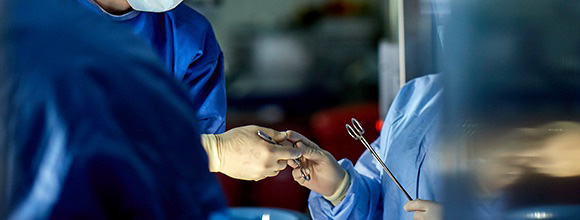
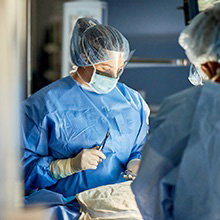
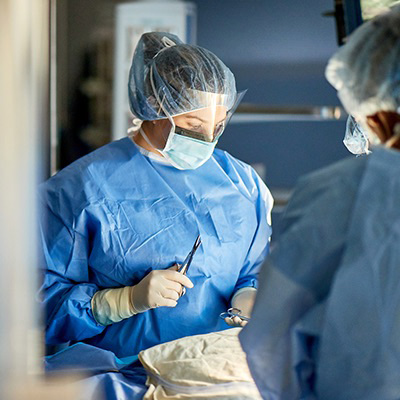
Reconstructive surgery
You may choose to have reconstructive surgery after your breast cancer is removed to rebuild the shape and look of your breast. Our highly trained and experienced plastic surgeons perform breast reconstruction after skin-sparing or nipple-sparing mastectomy, typically at the same time.
They perform such procedures as deep inferior epigastric perforator flap reconstruction, which uses your own tissue to recreate a new breast.
We also offer a surgical technique called Resensation®. It can help restore sensation after your mastectomy. Women typically experience numbness and permanent loss of sensation to the breast area after a mastectomy because nerves that provided feeling to the breast and nipple are cut. Resensation uses nerve grafting in attempt to bring feeling back to your breast.
Radiation therapy
- Whole breast radiotherapy: This uses targeted beams of energy to shrink and destroy cancer cells. For breast cancer, it's typically performed after surgery to kill any remaining cancer cells that can’t be seen with the naked eye.
- Partial breast radiotherapy: We use this radiation in smaller parts of your breast, after a tumor is removed, to lessen the chances of the cancer coming back.
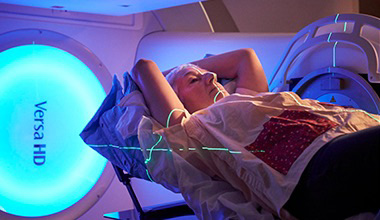
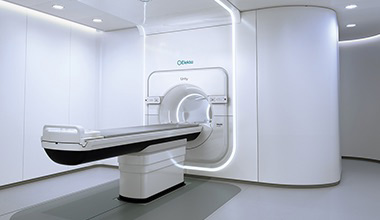


Medical oncology
- Chemotherapy: This delivers strong medicine to kill your cancer cells. Our team monitors you closely to determine the correct dose for maximum effectiveness and to reduce side effects.
- Immunotherapy: These drugs help your own immune system fight the cancer cells.
- Targeted therapy: These drugs target and help block the spread of cancer. They typically cause less severe side effects than chemotherapy.
- Hormonal therapy: This stops the growth of hormone-sensitive tumors by preventing the body from producing hormones or blocking the hormones.
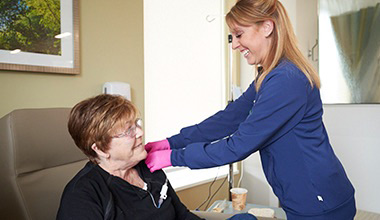
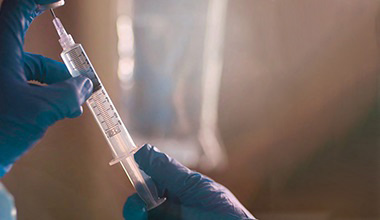


Breast cancer clinical trials
AHN specialists lead the NSABP Foundation, the world’s preeminent breast cancer research program. It’s one of the largest focusing on breast cancer clinical trials.
What is a clinical trial?
Clinical trials are studies that try to answer questions about new ways to treat cancer with medications, radiation, or surgical techniques. Previous trials have shown how new methods of treatment improve survival and quality of life, and reduce the risk of cancer returning.
You participate in a clinical trial only if you volunteer to do so and meet certain criteria for participation, and you can stop participating in a trial at any time.
Who can join a clinical trial?
The plan for the trial, called a protocol, explains the goal of the trial and how the study will be conducted. Based on the questions the research is trying to answer, each clinical trial protocol specifies the type of patient who can join the trial.
Common criteria for entering a trial are:
- Having a certain type or stage of cancer.
- Having received a certain kind of therapy in the past.
- Being in a certain age group.
Federal rules help ensure that clinical trials are run in an ethical manner, with your rights and safety protected. These rules ensure that you’re not put at increased risk by participating in the trial, and that the results of the study are accurate and meaningful.
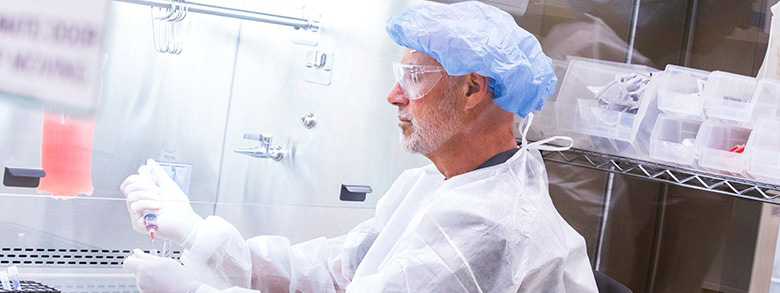
Currently active breast cancer clinical trials
If you would like to participate in a clinical trial and help our innovative team discover groundbreaking cancer solutions, ask your doctor if you’re eligible to participate in one. See which clinical trials are currently active and open for participation.
Rehabilitation
The AHN Cancer Institute’s trained therapists can provide you with comprehensive support after breast cancer treatment. Our experienced physical and occupational therapists are dedicated to helping you overcome any challenges you may face after your breast cancer treatment is complete. We collaborate with your physicians and keep them fully informed of your progress.
Our Oncology Rehabilitation program can help monitor your risk of breast cancer-related conditions, including arm or breast lymphedema — swelling that can occur after surgery and/or radiation. When the lymph nodes or lymphatic channels are injured, their ability to remove excess fluid is compromised. Lymphedema can be managed with effective treatment by a lymphedema-certified therapist and diligent follow-through at home.




Our certified lymphedema therapists are physical and occupational therapists with additional training in the lymphatic system. Your personalized plan of care may include complete decongestive therapy, manual lymph drainage, compression techniques, exercises, self-care training, and compression garments.
Your plan of rehab care may include:
- Exercises to improve soft tissue mobility and to develop strength, balance, and endurance.
- Interventions to reduce pain and swelling.
- Education for you and your caregivers on dealing with functional limitations at home.
Contact us
Call the AHN Cancer Institute at (412) 578-HOPE (412) 578-4673 to connect with a nurse navigator or schedule an appointment.
Schedule a mammogram
Early detection is extremely important. With over 20 locations and convenient appointment times, we make every effort to take the stress out of your annual mammogram.
Referral to oncology
If you’ve received a referral to schedule with medical oncology, radiation breast cancer oncology, or another breast cancer oncology group, call (412) 578-HOPE (412) 578-4673 to connect with a nurse navigator and schedule an appointment.
Second opinions
If you have cancer, you have a team of oncology specialists ready to review your medical records and offer you a second opinion. After completing their review, they’ll talk with you about your goals to determine a course of treatment that’s right for you. To get started, fill out our Second Opinion Request form. A nurse navigator will contact you within the next 24 to 48 hours to discuss next steps and schedule.
GammaPod® is a registered trademark of Xcision Medical Systems and used with permission.
Resensation® is a registered trademark of Axogen Corporation and is used with permission.
Source: How Common is Breast Cancer. Cancer.org.
Mammotome is a registered trademark of Devicor Medical Products.

